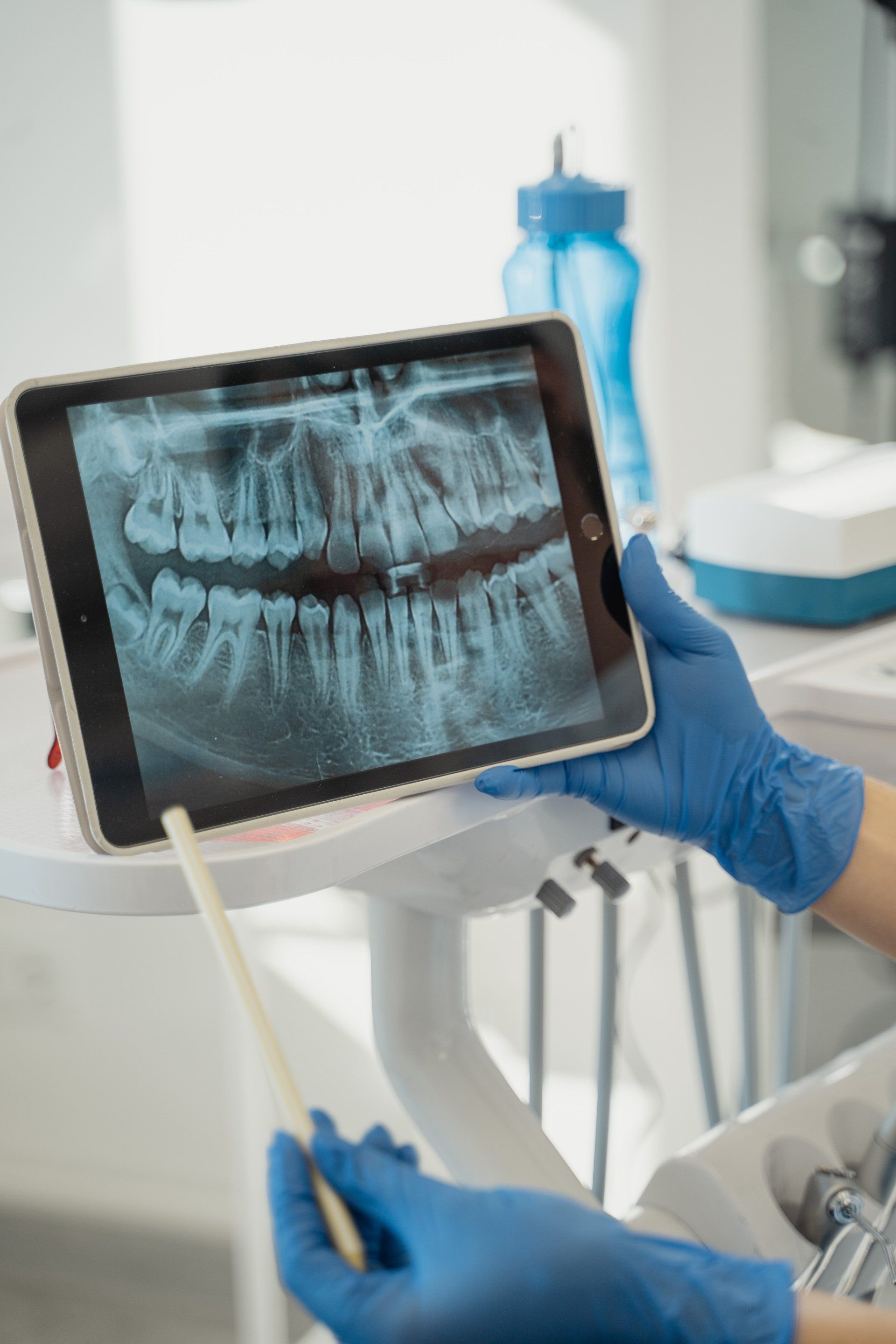Handling a high-risk HIPAA breach
Published October 31, 2019
Part of scenarios for patient privacy crisis management
Every hospital encounters patients, who for the reason of their social circumstances, dependent status, personal characteristics, or the nature of their condition, are more vulnerable than the general population. While compliance with HIPAA is indeed important, because of the potential to inflict significant liability on the hospital resulting from compliance failure, it should not be the only consideration when caring for vulnerable patients. Mere compliance with the minimum requirements of HIPAA does not guarantee the safety of vulnerable patients. In the case study scenario, the hospital emergency department in a small town admitted a 15-year-old female with emergency labor. After delivery in the emergency room, the mother and the baby were moved to Obstetrics and Neonate. Despite appropriate care, the infant presented with multiple medical problems, which may or may not be resolved in the future. A nurse, who took care of the young mother, inadvertently disclosed the patient’s identity and condition to her young daughter, who found her mother's phone and managed to spread the news in all high schools in the area by the following day. The 15-year-old managed to hide her pregnancy from her family. To complicate matters, the young mother’s mother and aunt work in the same hospital.
HIPAA assessment
The Health Insurance Portability and Accountability Act of 1996 (HIPAA) required the Secretary of the U.S. Department of Health and Human Services (HHS) to develop regulations protecting the privacy and security of certain health information. The HIPAA Privacy Rule sets national standards for the protection of personal health information against unauthorized disclosure. The Privacy Rule can be found at 45 CFR Part 160, and 45 CFR Part 164, Subparts A and E. The standards, requirements, and implementation specifications apply to health plans, healthcare clearinghouses, and healthcare providers and their business associates. The Security Rule sets standards for protecting electronic health information. Enforcement of the regulation is the responsibility of the Office for Civil Rights (OCR) that is part of HHS. In this case study, the nurse disclosed personal health information, including the full identifier and the patient’s medical condition to an unauthorized individual. A nurse, as an employee of a covered entity, would indeed be subject to obligations under HIPAA. The Site Privacy Officer’s concerns should be the facilitation of an investigation and risk of harm assessment. If a Breach is substantiated and notification is required, the Site Privacy Officer shall notify each individual whose PHI has been accessed, acquired, used, or disclosed as a result of the Breach. In cooperation with other hospital functions, the Site Privacy Officer shall determine what additional external notifications should be made. In this case, it may be necessary to notify local law enforcement if there is a reason to believe the minor’s pregnancy was the result of abuse, neglect, or domestic violence.
A breach or not?
Breach means the acquisition, access, use, or disclosure of protected health information in a manner not permitted under subpart E, which compromises the security or privacy of PHI. To prevent unauthorized access to text messages that contain patient health information, the messages must use encryption for data at rest and in motion. Encryption makes the information inaccessible to users who are not authorized to access the information, especially when the device is borrowed, lost, or stolen (providertech, 2020). Breach excludes unintentional acquisition, access, or use of PHI by a person acting under the authority of a covered entity, or inadvertent disclosure between employees of the same covered entity, as long as this information does not spread any further. Breach also excludes disclosures made to unauthorized persons who would not be reasonably able to retain such information. Any other acquisition, access, use, or disclosure of PHI not permitted under subpart E is considered a breach [45 CFR 164.402]. Based on this definition, the incident indeed constitutes a breach of personal health information that does not fall under any of the exclusions. In the event of an impermissible use or disclosure of unsecured PHI, the covered entity is obligated to conduct a risk assessment. Breach notification is necessary for all situations where PIH has been compromised. Breach notification is not required if the covered entity demonstrates that there is a low probability that PHI has been compromised. In this particular case, there is no doubt PHI has been compromised since the information reached all four high schools in the area by the following day.
Breach notification
The HIPAA Breach notification rule [45 CFR 164.400-414] requires covered entities to report breaches of health information that have not been rendered unusable, unreadable, or indecipherable. Notification of the Breach has to be provided to the affected individuals, the Secretary, and in certain circumstances, to the media. In this instance, the hospital would have to report the Breach to the patient and to the Secretary within 60 days following the discovery of the Breach. The notification must include a description of the Breach and the information involved, and steps the individuals should take to protect themselves from potential harm. Besides, the hospital should include a brief description of what it is doing to investigate the breach, mitigate the harm, and prevent further breaches, as well as contact information such as a toll-free number. To notify the Secretary, the hospital shall submit the information via an electronic form that is available on the OCR website.
Risk of Harm Assessment
In January 2013, the Risk of Harm standard was dropped from the final HIPAA Omnibus Rule. The initial rule stated that a breach does not occur unless the access, use or disclosure poses "a significant risk of financial, reputational, or other harm to an individual." It was up to the covered entities to decide whether the harm standard applies or not. The new rule assumes that all impermissible PHI disclosures are reportable (HHS, 2013). However, risk assessment conducted by the hospital shall not be limited to HIPAA compliance obligations. Risk is the probability that a vulnerability will be threatened, resulting in an adverse consequence. The hospital has to consider the potential harm to the affected patient as well as liabilities for the hospital and potential disruption of its own business operations.
The patient
The case study represents a myriad of ethical and legal problems, in addition to HIPAA compliance. These concerns include the fact that the patient is an unemancipated minor, that her parents were unaware of her condition until birth, and that the pregnancy may have been the result of rape or incest. The consequences of such disclosure in a small town are easy to imagine. Whilst the general acceptance of unwed and underage mothers and offspring conceived out of traditional boundaries of formal marriage depends on location, time, and culture, some patterns are universal in nature and only vary in extent. A teenage mother and a child of uncertain parentage, especially if ill or disabled, are likely to face severe repercussions and lifelong shunning even in the most benign environments. Young mothers may be forced to give up their newborn babies and become themselves subject to retaliation from angry relatives, including the risk of violent death. According to RAINN, the overwhelming majority of victims of sexual abuse know the perpetrator. Even more disturbingly, in 80% of perpetrators were a parent (RAINN, 2013).
Josephson (2016), in her book “Rethinking sexual citizenship” (Josephson, 2016) discusses in detail the causes and consequences of early motherhood, including various societal ills connected to the phenomenon of teenage motherhood, both real and perceived. Teenage sexual activity is considered a deviancy and a threat to public order, and as such, it is subject to widespread public shaming (pp. 82-84). The experiences of teenage mothers can be extremely distressing due to public shaming, shunning, rejection by the community and the family, and absence of elementary support. Even worse, children are often deprived of many opportunities later in their lives because of biases and prejudices; they have to grow up with (Odyssey, 2016).
According to “Report on Exploratory Study into Honor Violence Measurement Methods”, honor violence seems to be rare in the United States and apparently limited to ethnic minorities mainly from South East Asia. These cultures do not view honor violence as a crime, and the victims or potential victims are unlikely to report victimization because of fear of repercussions from their own family. These cultures defend honor violence as a means to maintain or regain the reputation and social standing of a family by female members who violate the community’s traditions and norms, should it be sexually inappropriate behavior or disobedience (Helba, Bernstein, Leonard and Bauer, 2014). Other cultures find it appropriate to murder the infant whilst preserving the life of the female. Hungary, a country in Eastern Europe, is an example of a culture where infanticide is generally acceptable, although not legal, mechanism of restoring family honor (Journeyman’s Pictures, 2016). The risks to the mother and the infant following such disclosure are grave, and depending on circumstances, and cultural and ethnic background can include retaliation, infanticide, and honor violence.
The Infant
Genetic testing of the infant may be warranted to confirm paternity and exclude or confirm the pregnancy was the result of an incestuous relationship. Whether such a test would or would not be permissible and what authorization is required to conduct such tests is a delicate question that requires careful professional judgment, both medical and legal. Genetic screening without parental consent is subject to much controversy, and New Act Newborn Screening Saves Lives Reauthorization Act of 2014 includes the requirement of parental consent for the screening of newborn babies with deadly yet treatable conditions (National Institutes of Health, 2015). The quality and speed of newborn screening programs vary from state to state (Gabler, 2013). Whelan (2013) argues that the main concern of privacy advocates and patient advocacy groups was not the initial screening itself but indefinite retention of genetic material for undisclosed uses, potentially resulting in tangible harms in the future such as employment discrimination and insurance coverage (Whelan, 2013).
The American Society of Human Genetics (ASHG, 2015) published a position statement in which it clarified its stance on genome-scale, carrier, and newborn results, and covered a variety of conditions and circumstances including incest. While parental consent is required under most circumstances, clinician’s judgment can override the lack of parental consent "when there is strong evidence that a secondary finding has urgent and serious implications for a child's health or welfare, and effective action can be taken to mitigate that threat". In this instance, the healthcare provider should be able to perform genetic testing even without parents’ consent.
Mitigation of adverse consequences
Steps relating to the protection of the young mother and the infant shall be taken with full consideration of the benefits and risks of available options and possible solutions.
Personal representative
With respect to use or disclosure, 45 CFR Part 160 does not preempt State Law in regards to disclosure of protected health information about a minor to a parent [45 CFR 160.202(2)]. However, in this particular instance, the disclosure of the minor’s condition may not be in the best interest of the young mother and her newborn child. First, the minor’s parents or legal representatives were supposedly unaware of their daughter’s pregnancy. This fact itself should trigger hospital procedures for care for vulnerable minors, including potential victims of rape, incest, sexual abuse, parental neglect, domestic violence or human trafficking. A minor does not become an adult by virtue of becoming pregnant and giving birth. Regardless of the potential Breach, determining who is the patient’s legal representative, and making sure, that she does have an appropriate one, would be the most important first step.
A covered entity may elect not to treat a person as the personal representative of an individual if the reason to believe that the individual may be subjected to domestic violence, abuse or neglect by such person, or treating such person as the personal representative could endanger the individual [45 CFR 164.502 (g)(5)(i)(A)-(B)]. The hospital has the option to exercise its professional judgment and decide not to treat the person as the individual’s personal representative [45 CFR 164.502 (g)(ii)]. The rules for the emancipation of a minor vary from state to state. Whilst in most cases court decision is required, in cases where the evidence shows that censurable parental conduct had occurred implied emancipation may apply (Legal Information Institute, n.d.).
Protection of disclosure within the hospital
Permitted uses and disclosures include the use of the individual’s name, location, and condition described in general terms to maintain the hospital’s directory and to be able to locate the individual in the facility. The patient should have the opportunity to agree or object to such disclosure [45 CFR 164.510(a)(1)(i)(A)-(C)]. In emergency circumstances, the health care provider shall act in the individual’s best interest as determined by the covered health care provider, in the exercise of professional judgment [45 CFR 164.510 (3)(B)].
Law enforcement disclosures
The Fourth Amendment to the U.S. Constitution states: “The right of the people to be secure in their persons, houses, papers, and effects, against unreasonable searches and seizures, shall not be violated, and no warrants shall issue, but upon probable cause, supported by oath or affirmation, and particularly describing the place to be searched, and the persons or things to be seized” (U.S. Constitution, Amendment IV). Medical records contain very sensitive information about individual patients. Law enforcement searches are authorized as reasonable under very specific circumstances and only to a specific extent. Whilst the pregnancy could have been the result of a relationship between two sexually experimenting minors, the possibility that an adult was involved deserves an appropriate investigation. Successfully hiding a pregnancy from an immediate family is not an easy thing to achieve. Near-complete ignorance and willful blindness are required not to notice that a teen living in the same household is pregnant and about to give birth. Awareness of the pregnancy, in combination with the failure to provide appropriate support, could indicate the intent not to allow the infant to live. In some cultures, infants born from unapproved relationships are at risk of infanticide.
The Site Privacy Officer shall make appropriate disclosures to staff in functions designated to coordinate high-risk cases of this nature with other appropriate departments and services, in addition to the investigation of the Breach. To this end, additional external disclosures may be necessary. A covered entity may use or disclose protected health information without the written consent or authorization of the individual if there is a reason to believe that the individual is a victim of abuse, neglect, or domestic violence. Such disclosure shall be limited in nature to comply with relevant laws if the individual agrees, or to the extent expressly authorized by statute or regulation [45 CFR 164.512 (c) (i) – (iii)]. Any attempts to mitigate the damage caused by the Breach shall be appropriately documented for the Office of Civil Rights (OCR).
Obligations after impermissible disclosures
Once an impermissible disclosure has been made, covered entities should take steps to mitigate the potential damage. Covered entities have a duty to identify and document security incidents and privacy violations, including an impermissible disclosure. Appropriate safeguards include administrative, technical, and physical safeguards that protect PHI from any intentional or unintentional use or disclosure [45 CFR 164.530]. In response to the incident, the hospital should examine the events that led to the disclosure. This primarily includes the review of the history of impermissible uses and breach logs, training materials, and training records. Gap analysis and holistic vulnerability assessment to prevent future breaches would be beneficial to prevent future breaches. Examination and review of the hiring process and critical assessment of organizational culture would facilitate the change in the ways people think about patient privacy and the implications of privacy breaches.
Personal accountability
The hospital shall have in place written policies and procedures regarding breach notification and must train their workforce appropriately. The organization also has to apply appropriate sanctions against staff members who fail to comply with HIPAA law as relevant to them. A breach of this kind would warrant the review of the appropriateness of policies and procedures, the record of previous breaches, and certainly a revision of training including a reminder of the implications of such disclosures for the patients and for the hospital.
When hiring new people, the focus on technical skills shall not overshadow the importance of character, trustworthiness, and ethical conduct. Although most organizations perform background checks prior to hiring them, these do not typically reveal elements such as trust. Workforce retention is a major problem in healthcare. Recent estimates placed the cost of staff turnover at $40,000 to $80,000 per nurse, including the investment required to find a permanent replacement, ensure staffing of shifts and provide onboarding training (Cohen, 2013).
A departing nurse can cause significant damage to the hospital, especially if hurt feelings are involved or the dismissal is perceived as unjust. Experience from the University of Rochester Medical Center (Shaw, 2016), shows how much damage a nurse can inflict on the hospital before leaving if she decides to take advantage of access to patient records that would give her the necessary leverage to either move to a new position or start a practice on her own (Shaw, 2016).
Whether the nurse who caused the Breach should be dismissed is a decision, the Human Resources department would have to make. Considering the potential damage caused both to the patient and to the hospital, and the need for extensive resources dedicated to mitigation of the disclosure, immediate dismissal seems appropriate. The incident does violate not only HIPAA but also represents a breach of the professional code of conduct and hospital policies. Most importantly, it shows a lack of sound judgment, which may be critical in many other situations. However, any action taken by the hospital should be proportionate and fair to avoid scapegoating of a single individual for conduct that may, in fact, be a widespread cultural problem observable across the enterprise, especially when it is clear this was the result of a mishap rather than malicious intent. A careful review of past incidents, policies, and procedures and quality of training and training records should provide better guidance about what is appropriate. The hospital should also look into the use of personal devices for work and the use of encryption for short communications within the hospital. At the very least, the nurse should be placed on administrative leave until the investigation is closed.
HIPAA v. the hospital
The risks to the hospital include a liability relating to HIPAA compliance failure and tort claims, including negligence. HIPAA breaches and the implications resulting from compliance failure is not the only liability the hospital’s leadership could face.
In 2012, in R.K. v. St. Mary’s Medical Center, the West Virginia Supreme Court of Appeals ruled that HIPAA did not preempt state law, and provided the standard of care for tort claims. The hospital shared R.K.’s medical information relating to his psychiatric hospitalization with his estranged wife, despite the patient’s request not to. R.K’s cause of action included negligence (R.K. v. . St. Mary’s Medical Center, 2012).
In Byrne v. Avery Center for Obstetrics and Gynecology, the Connecticut Supreme Court ruled that HIPAA does not preempt negligent claims for a breach of patient privacy. In this particular case, Emily Byrne’s medical information was shared with her partner against her wish. The healthcare provider received a subpoena from her partner’s attorney in a paternity suit and complied with the request, disclosing Byrne’s medical information to her significant other. Byrne then successfully sued the hospital for negligence (Byrne v. Avery Center for Obstetrics and Gynecology, 2014). Lewis in The National Law Review (2014) stressed that the fact that HIPAA does not give patients a right of private action does not mean that remedies for questionable disclosures do not exist. Remedial measures include namely state health laws and common law torts (Lewis, 2014).
Conclusion
Disclosure of protected health information in circumstances that would make the individual subject to serious repercussions is a major concern for the affected individual and for the hospital. The incident represents a complex set of medical, legal and ethical concerns in addition to HIPAA violations. Professional judgment is required to decide whether or not there is a reason to believe the teen may have been the victim of abuse, neglect or domestic violence, whether the hospital can deny disclosure of the patient’s PHI to her parents, and whether implied emancipation applies in this case. Hospital’s post-incident assessment shall address the risk of harm to the affected patient and her infant child, review previous instances of improper disclosures and breaches, implement corrective and preventative action to ensure HIPAA compliance, and address other risks, such as the risk of litigation for negligence. The Human Resources Department shall make the decision about the nurse’s future employment, and place her on administrative leave until the completion of the investigation. Gap analysis and critical assessment of organizational culture would be beneficial to identify vulnerabilities in the hospital’s operations and address them appropriately. Policies and procedures have to be implemented with fidelity to be effective. Review of training materials, procedures, methodologies, and training effectiveness has to follow to prevent inadvertent disclosures in the future. Dismissal of a single employee does not solve the problem of systemic issues and organizational culture that need to be addressed separately to be effective.











